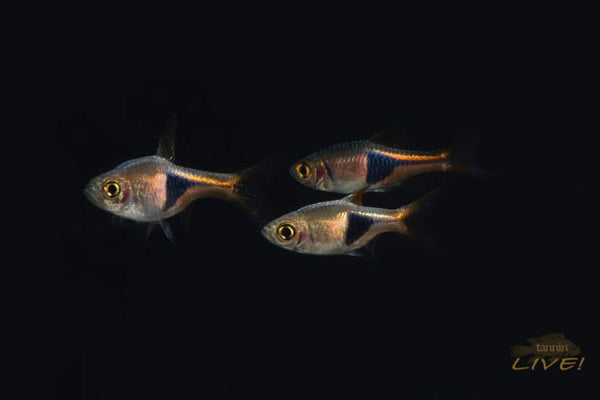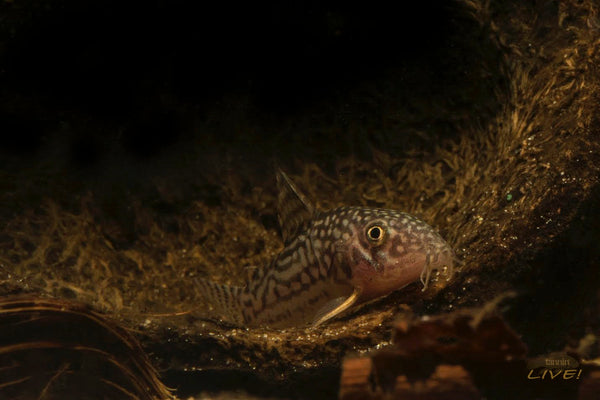- Continue Shopping
- Your Cart is Empty
In the company of friends...
It seems like the longer I'm in this hobby, the more I learn. And sometimes, the more I learn, the more I realize that what we have been doing for a long time IS not such a bad thing. Yet, sometimes, we as a group tend to forget this stuff.
Yeah, every once in a while, me- Mr. "Question-Everything-You-Know-About-The-Hobby"- will ponder stuff which has long been considered a hard and fast "rule", and beat the shit out of it with my consistent questioning and personal research.
Sometimes, I think I'm correct in my conclusions that we've been too stubborn, and that all sorts of other approaches can not only work- but create better outcomes than we've ever considered!

Other times, I tend to go along with prevailing wisdom, as it really makes no sense to question what seems logical and beneficial for our animals. I still think about it a lot, though. Like, the social structures that we provide when we keep various species of fishes... It something that is fascinating, yet many of us don't give it a lot of thought...We add our fishes to our tanks and simply enjoy them, without much consideration for the fascinating aspects of this stuff!
That's okay, I guess...but there is a lot to this stuff that I think can really help us enjoy our fishes even more when we study it a bit.

Let me digress for a quick second. Give you a bit of context for what I'm thinking here.
I suppose one of the real fun parts of aquarium keeping is figuring out what fishes you want to keep, and setting up the aquarium to accommodate them. In many cases, not only does "setting up the tank to accommodate them" mean selecting the proper sized tank, environmental parameters, and physical layout, it also means suitable social groups of them.

Now, if you're like me, you love sizable shoals or schools of small fishes-usually characins- in large tanks. There's something about the "scale" and interest that such groups provide, particularly in an aquarium designed to meet their needs. And you, too, have probably have kept many schools of characins and such. You KNOW that most of these fishes simply fail to thrive when not kept in schools.
Schools. Shoals. Groups.

I've always felt that as hobbyists, we need to do all that we can to help facilitate the beneficial aspects of this social behavior.
Oh, but first, a "refresher" of sorts...
The word "fish” is the correct plural form when you’re referring to a group of specimens all belonging to the same species. “Fishes,” on the other hand, refers to a group which consists of more than one species.
Us fish geeks mess that one up all the time.
I mean, I know that I do!

Oh, and let's just jump on that most confusing of fishy distinctions...the difference between a shoal of fishes and a school of fishes:
A shoal is a group of fish congregating together, perhaps even to benefit from the safety in numbers...yet not moving or behaving in unison. They can be facing in multiple directions, with no coordinated actions.
That's the distinction.

A school is when all of the members of the group are moving and behaving in a coordinated manner.
Personally, I've always liked the idea of keeping groups of the same species together whenever possible- regardless of if they school together, or simply "cohabit."
And then there are fishes which live in "groups", right?
Social aggregations of fishes which don't really display "coordinated movements" and such, but do exhibit social behaviors in a group setting, such as dominance hierarchies, feeding and spawning orders, etc.

Okay, all of that grammatical B.S. now safely felt with and tucked away neatly, let's ruminate more about the idea of keeping lots of fish- or fishes- together in our tanks! I know, it's sort of "Aquarium Keeping 101", but it's something that we likely tend not to give much thought to as we move on to other stuff, right?
Some of the best fishes to keep as single-species units, in my opinion, are catfishes, like the Corydoras, Brochus, and even the Otocinculus species.

The dynamic of keeping these endearing fish in groups is almost irresistible...and mimics how they are often found in Nature. It's fun to watch, and really enlivens your aquarium experience.
They are really social fish!

Not only do the fish show their most interesting behaviors in single-species groups, they seem to feed better, stay healthier, and spawn more easily, in my experience.
Makes perfect sense, right?
I recall that I had a sizable group of 14 Corydoras panda a while back in one of my aquariums that lived very well together in a school that I gradually built up. However, almost paradoxically, they actually seemed to behave more shy- or perhaps you could say, "cautious"-as a large group than they were as individuals or small group.
I would say that they definitely "schooled", but they adapted a strange "schedule" once the group truly became a school, and they were almost nocturnal or crepuscular, often coming out as a school, seemingly from out of nowhere, just as "dusk" broke in my tank (gotta love controllable LED's, huh?)! Of course, if you dropped in food at almost any time of the day, all bets were off, and they came out to feed actively- and then quickly went back to wherever the hell they hid during the day..
And then there are those Otocinculus...

This is a fish that just seems to be, well- problematic- for many...And I think it's no secret that they often suffer from 1) Lack of sufficient algal growth, and 2) The apparent "comfort" of the company of their own kind. They will often live for what seems like extended periods of time in a solitary manner, or even in small groups- only to just sort of "fade" at some point.

Personally, I think that this fish creates a sort of "paradox" for aquarists: One one hand, you want to support it's need for socialization by keeping it in larger groups (say, a minimum of 6-8 specimens), while on the other hand, providing sufficient micro algae growth on rocks, plants, and other aquariums surfaces. I wouldn't even think of keeping this fish in groups of less than 6 individuals...again, possibly problematic if you're tank can't provide sufficient algal growth for them.
Yeah. A paradox.
And of course, everyone knows that some species simply need to be kept in groups to confidently exist in your aquarium. For example, the Glass Catfish, Kryptopterus sp. is a fish that will literally waste away when kept individually, like so many of us probably did with this fish when we were kids. (Okay, well, I did!)

These are fishes that truly have a timid and non-aggressive nature, and they should always be kept in a group...and by "group", I'm thinking 6 or more...even larger, if your tank can accommodate them. And of course, this means an appropriately-sized aquarium and physical layout to accommodate their needs.

(Pic by JohnstonDJ, used under CC BY-S.A. 2.0)
And, if you're curious to see how these fish can act in a large group, check out Tai Strietman's video of his Asian-themed tank. They display a relaxed, gregarious nature, which is much more natural than the skulking-in-the-corner, timid personality they typically display when kept individually. It's plainly obvious, when you watch this video, that these fishes are near-perfect to keep in this fashion, and you'll never attempt keep them individually again!

You probably have already considered this idea of keeping various species of catfishes in groups, but it's something I felt like touching on because I still see many hobbyists keeping them individually or in very small groups, which is a bit surprising. Now, yes, this is a "general" statement, and it would be irresponsible of me to intimate that it applies automatically to every species. Obviously, there are many exceptions to this.

And of course, there are fishes which tend to be kept singly, which, if the proper space and environment is set up- and if introduced as juveniles together, could sort it out and live in some semblance of a peaceful social order for an indefinite period of time.
The key there is observation, study, and patience...And the ability to take quick and decisive action should things "head south" in your little aquatic Utopia!

There is certainly a lot we can learn, and much to consider about the social behavior of our fishes, and how we can provide the optimum conditions to enhance it.
Regardless, in this era where tanks are set up as a" temporary" display, or set up to highlight the aquascape, with the fishes simply being "accessories", we often see tanks with the fishes installed without due consideration for their long-term need.
It need not be this way. In fact, it shouldn't be this way.
I'd go so far to suggest that, even if you're setting up a temporary display for a competition, or whatever, you need to display them in proper groups. Remember, a display seen by a lot of people who might be influenced by it should be set up with animals in proper context.
Yeah, it sends the wrong message to the uninitiated to do this.
A simple concept. Probably almost "remedial" in nature. However, something that we need to keep in the front of our mind when setting up our next aquarium, no matter how unique or different it may be. Place the needs of your fishes first.

You probably know that.
In fact, I"m certain that you do.
So, please pass along the thought to someone who might not. There are a lot of new people coming into the hobby all the time- and we'd all be better off it they stay in it!
Stay thoughtful. Stay considerate. Stay supportive. Stay inspirational. Stay devoted. Stay curious...
And Stay Wet.
Scott Fellman
Tannin Aquatics








Scott Fellman
Author